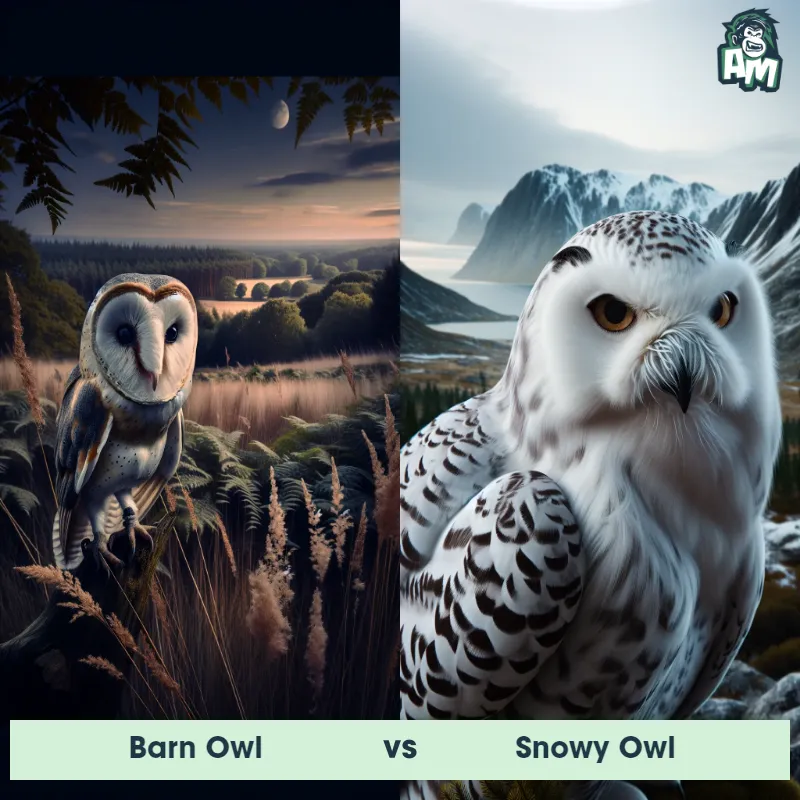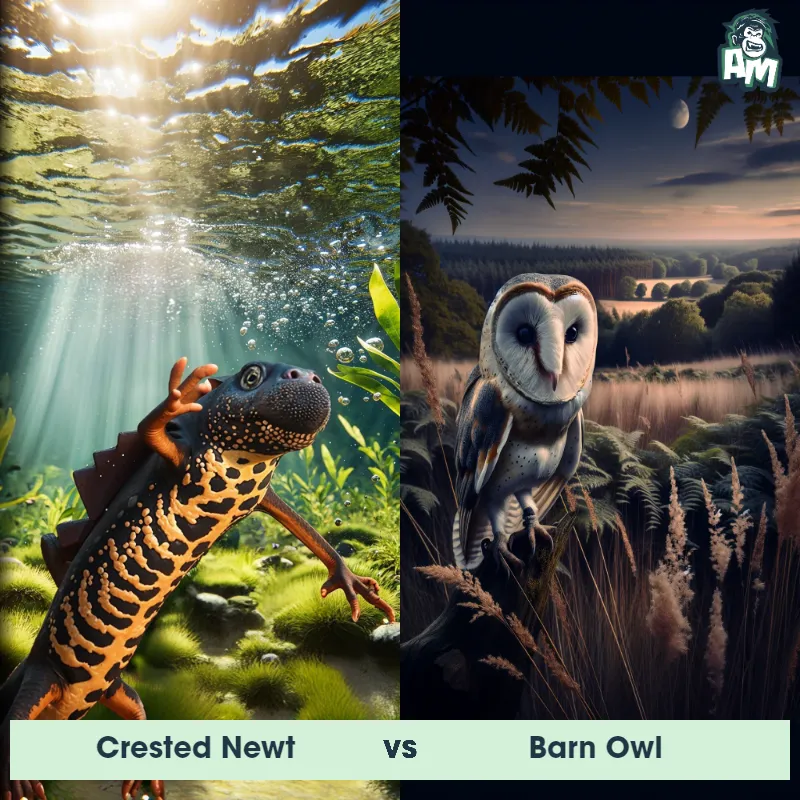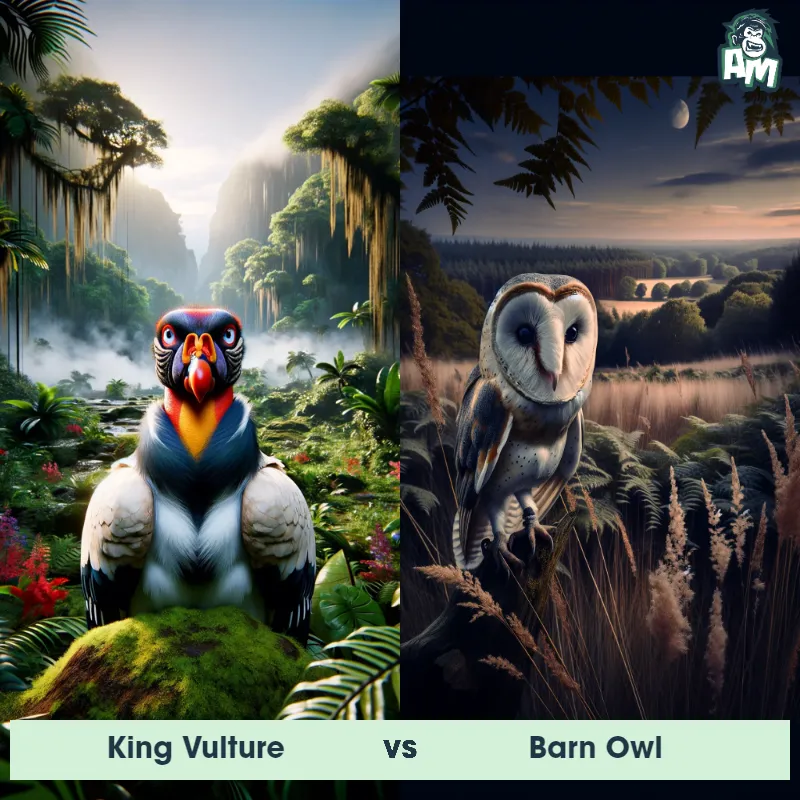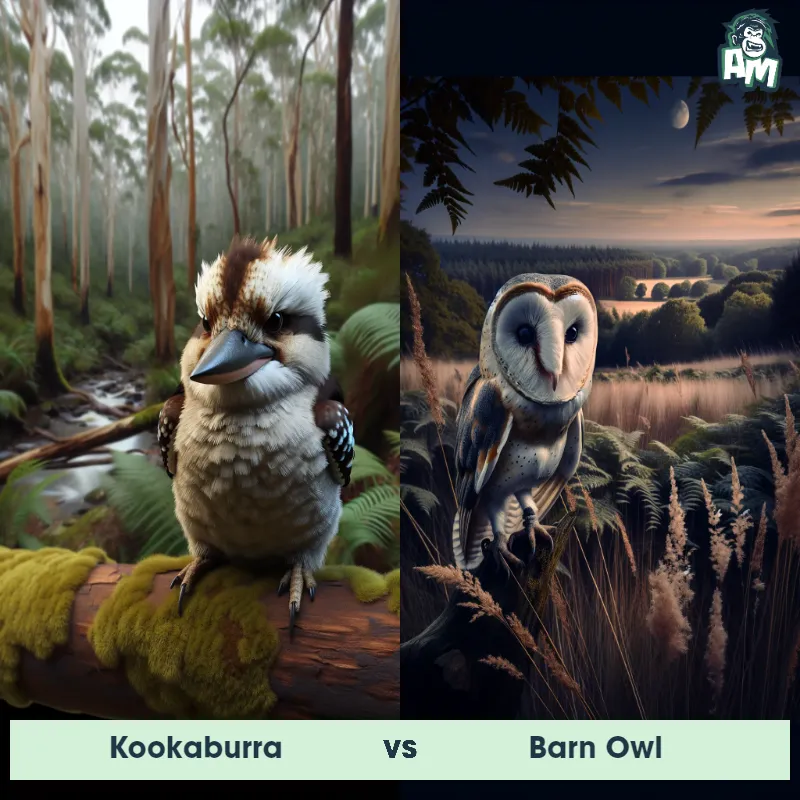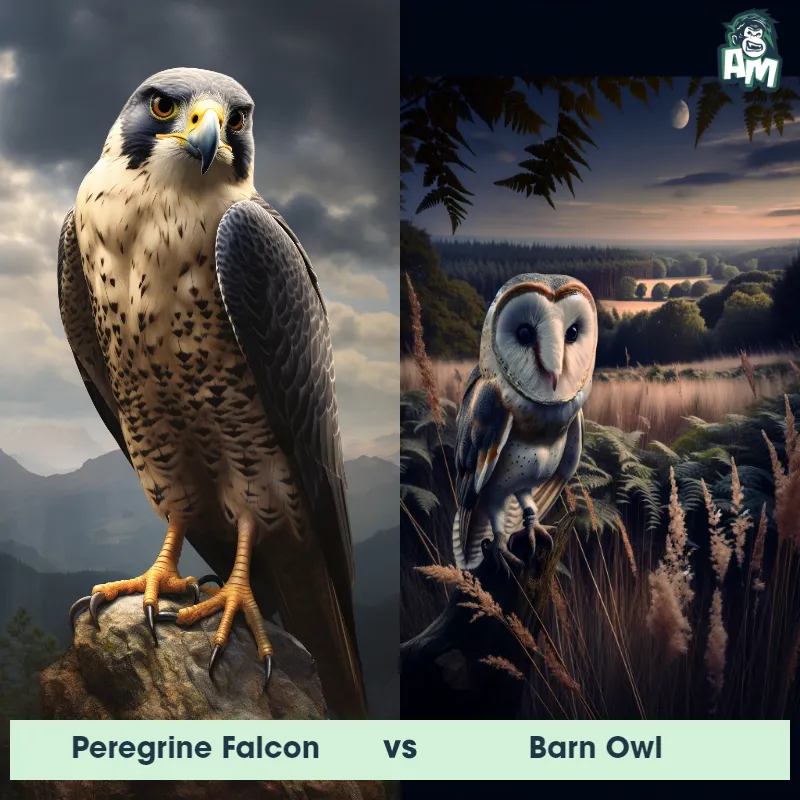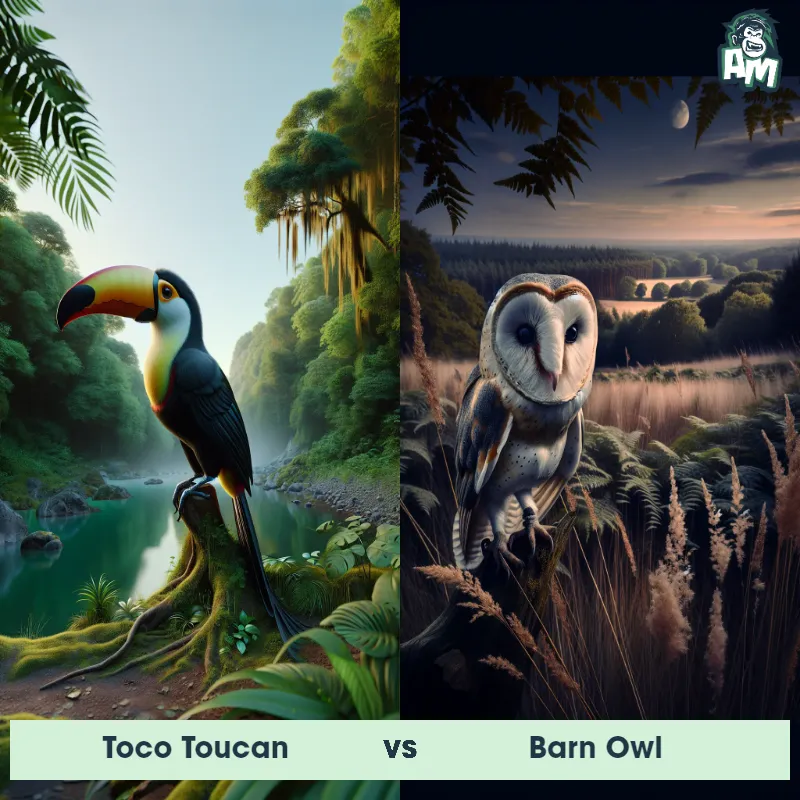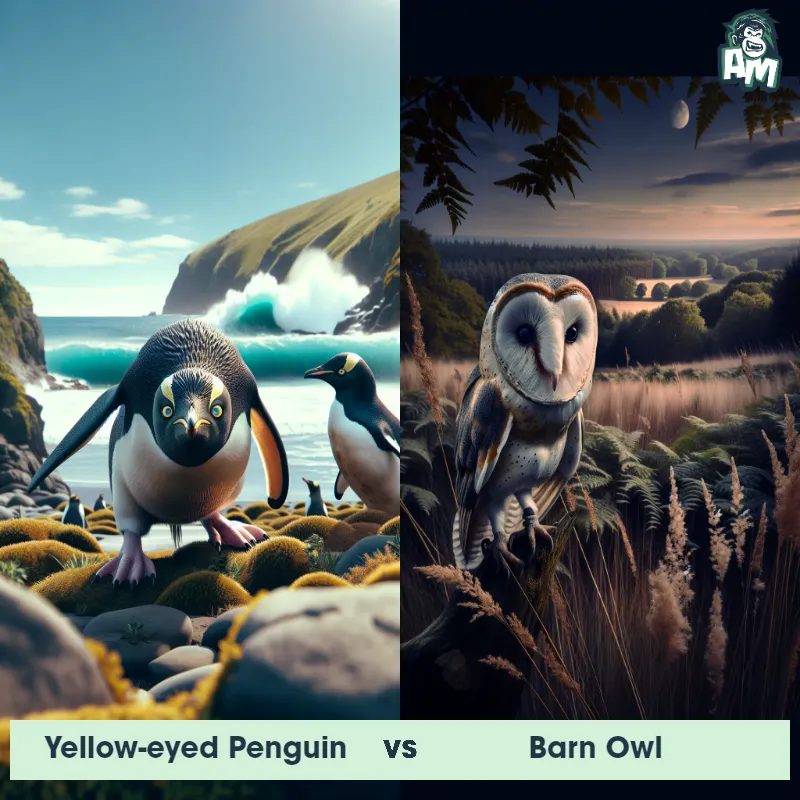The Barn Owl
The Barn Owl, scientifically known as Tyto alba, is a medium-sized owl found in various regions worldwide, including North America, Europe, Africa, and Asia. It features distinctive characteristics, such as heart-shaped facial discs, long legs, and sharp talons. With a wingspan of about 39 inches and weighing around 1 pound, this nocturnal avian predator is known for its excellent hearing and silent flight, enabling it to swoop down upon its unsuspecting prey effortlessly. Its feathers are predominantly golden-brown, with speckles of white on the wings and back, providing effective camouflage amid its natural habitat.

| Barn Owl | |
|---|---|
| Size | Height - 13 to 15 inches (33 to 38 cm) |
| Weight | 1.1 to 1.4 pounds (500 to 650 grams) |
| Speed | 50 mph (80 km/h) |
| Key Strength | Agility and nimble flight |
| Biggest Weakness | Lack of physical strength |
| Scientific Name | Tyto alba |
| Family | Tytonidae |
| Habitat | Open grasslands, farmlands, and forests |
| Geography | Found worldwide except Antarctica |
| Diet | Small mammals like mice, rats, and voles |
| Lifespan | 2 years - 4 years |

The Barn Owl
The Barn Owl, scientifically known as Tyto alba, is a medium-sized owl found in various regions worldwide, including North America, Europe, Africa, and Asia. It features distinctive characteristics, such as heart-shaped facial discs, long legs, and sharp talons. With a wingspan of about 39 inches and weighing around 1 pound, this nocturnal avian predator is known for its excellent hearing and silent flight, enabling it to swoop down upon its unsuspecting prey effortlessly. Its feathers are predominantly golden-brown, with speckles of white on the wings and back, providing effective camouflage amid its natural habitat.
Fun Fact: The Barn Owl is considered to have one of the most acute hearing abilities in the animal kingdom, thanks to its facial disc structure that channels sound towards its ears, allowing it to locate prey even in complete darkness.
| Barn Owl | |
|---|---|
| Size | Height - 13 to 15 inches (33 to 38 cm) |
| Weight | 1.1 to 1.4 pounds (500 to 650 grams) |
| Speed | 50 mph (80 km/h) |
| Key Strength | Agility and nimble flight |
| Biggest Weakness | Lack of physical strength |
| Scientific Name | Tyto alba |
| Family | Tytonidae |
| Habitat | Open grasslands, farmlands, and forests |
| Geography | Found worldwide except Antarctica |
| Diet | Small mammals like mice, rats, and voles |
| Lifespan | 2 years - 4 years |
Barn Owl Matchups
We use AI to simulate matchups between the Barn Owl and other animals. Our simulation considers size, strength, and natural predatory behaviors to determine the most likely outcome.
Barn Owl: Diet, Predators, Aggression, and Defensive Behaviors
What do Barn Owls eat?
Barn Owls primarily feed on small mammals such as voles, mice, shrews, and rats. They have also been known to eat insects, birds, and occasionally fish.
Do Barn Owls have any predators?
Barn Owls do have predators such as larger owls, hawks, and sometimes even snakes. Mammals like foxes and raccoons may also pose a threat to Barn Owls and their nests.
Are Barn Owls aggressive?
Barn Owls are generally not considered aggressive towards humans or other animals unless they feel threatened or are defending their nest and young. They are known to exhibit defensive behaviors when they perceive a threat.
Do Barn Owls fight?
Barn Owls typically avoid physical confrontation with other animals unless necessary. They may display aggressive behaviors such as hissing, bill clapping, or attacking if they feel their territory or young are threatened.
How do Barn Owls defend themselves?
Barn Owls primarily rely on their camouflage and silent flight as defense mechanisms. When threatened, they may also use their sharp talons and beak to fend off predators or intruders.
What is the Barn Owl's biggest weakness in a fight?
The Barn Owl's biggest weakness in a fight is its relatively small size and lightweight structure compared to some of its predators. Despite their sharp talons and beak, they may struggle against larger and stronger animals such as eagles or larger owls in a physical altercation.
Fun Fact: Unlike most other owls, the Barn Owl doesn't "hoot" but instead produces a distinct screeching sound described as a hiss or scream, which can be quite alarming to those unfamiliar with its call.
Fun Fact: When it comes to meal time, the Barn Owl exhibits a voracious appetite, consuming an impressive amount of prey in a single year—estimated to be approximately 1,000 mice, voles, and other small rodents, making it an efficient natural pest controller for farmers.



